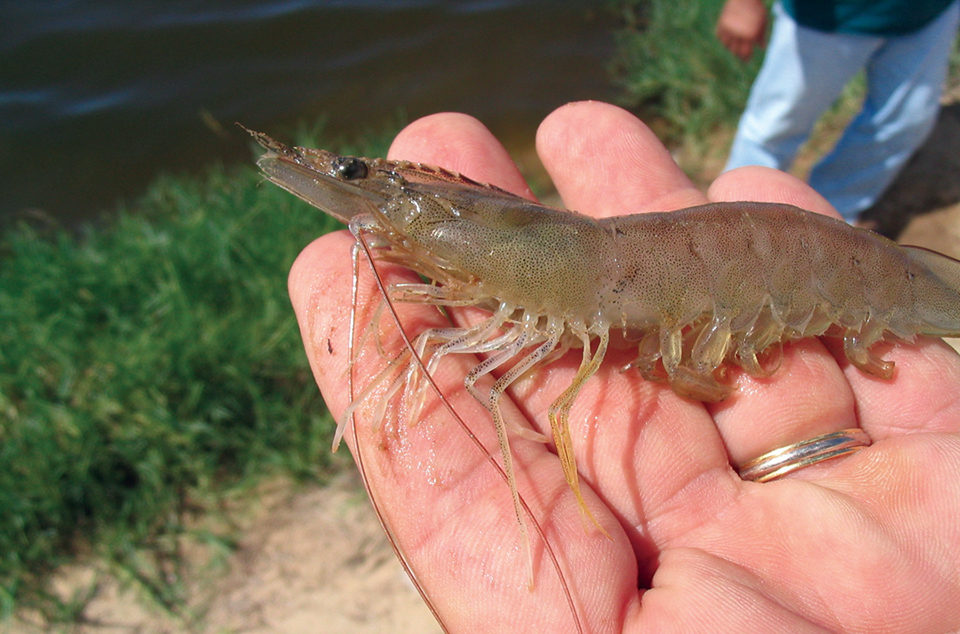Shrimp lack appropriate cells, pathways to respond to specific pathogens and the long-term ‘memory’ to deal with recurring infections

Scientific literature on shrimp has often adopted terms and approaches from mammalian immunology, but not always in a correct way. Such is the case in the use of the term “vaccination” in crustaceans. The principle of vaccination is based on two key elements of the immune system: specificity and memory. These two properties are not recognized in the immune systems of shrimp and other invertebrates.
Immune responses
Any immune response involves, firstly, recognition of the pathogen or other foreign material and, secondly, the mounting of a reaction against it to eliminate it. Thus, the host needs appropriate cells, molecules, and pathways to achieve long-term “memory” to deal with subsequent infection.
Broadly speaking, immune responses fall into two categories: innate (or nonadaptive) and adaptive. Vaccination targets the adaptive, memory-type component.
Humans and animals have very effective physicochemical barriers as a first line of defense, such as skin, scales or cuticle, and mucus. Once these barriers are breached, potential invaders are then exposed to a range of cellular and humoral defense reactions. These include blood clotting and wound healing, phagocytosis, encapsulation, and antimicrobial factors.
These barriers and reactions are components of innate immune response that act at the earliest stage of infection. At later stages, adaptive immune responses are generated based mainly on the production of lymphocytes and release of antibodies. Memory cells (lymphocytes) allow the adaptive immune system to mount a stronger, quicker, and highly specific response upon a second encounter with an antigen.
The important difference between the immune response types is that adaptive responses are highly specific for a particular pathogen. Moreover, adaptive responses improve with each successive encounter with the same pathogen because the adaptive immune system “remembers” the infectious agent. The two key features of adaptive immune responses are thus specificity and memory, factors upon which vaccines work.
Nonspecific immune responses
Invertebrates comprise approximately 95 percent of all animal species. Despite the success of invertebrates in terms of evolution, they lack the cells and pathways used by jawed vertebrates to mount adaptive immune responses. Invertebrates share with vertebrates many similar cells and molecules in their nonspecific immune systems, but invertebrates did not evolve lymphocytes or the ability to generate specific antibodies.
Immunostimulants
Vaccination is a term that has been coined to define a product that elicits a specific reaction. It should be strictly applied only when the purpose is to confer long-lasting protection through immunological memory.
These “vaccination” protocols often include the use of adjuvants such as killed mycobacterial cells, aluminum salts, or mineral oil. Adjuvants provide a “depot” effect and enhance antibody response. These usually act on one or more nonspecific innate components of the immune system, such as cytokines and antigen presentation, acting as immunostimulants to maximize specific responses.
Therefore immunostimulation is a better term than vaccination for applications regarding the challenge of crustaceans with pathogens or antigens.
(Editor’s Note: This article was originally published in the January/February 2007 print edition of the Global Aquaculture Advocate.)
Now that you've finished reading the article ...
… we hope you’ll consider supporting our mission to document the evolution of the global aquaculture industry and share our vast network of contributors’ expansive knowledge every week.
By becoming a Global Seafood Alliance member, you’re ensuring that all of the pre-competitive work we do through member benefits, resources and events can continue. Individual membership costs just $50 a year. GSA individual and corporate members receive complimentary access to a series of GOAL virtual events beginning in April. Join now.
Not a GSA member? Join us.
Authors
-
Victoria Alday-Sanz, Ph.D.
Aquatic Animal Health Consultant
Chaussee de Braine Le Comte 34
1400 Nivelles, Belgium[109,111,99,46,111,111,104,97,121,64,121,97,100,108,97,95,97,105,114,111,116,99,105,118]
-
Coauthor: Valerie Smith, Ph.D.
Gatty Marine Laboratory, University of St. Andrews
St. Andrews, Fife, Scotland[107,117,46,99,97,46,115,119,101,114,100,110,97,45,116,115,64,49,115,106,118]
Tagged With
Related Posts

Health & Welfare
A case for better shrimp nutrition
Shrimp farm performance can often be below realistic production standards. Use proven nutrition, feeds and feeding techniques to improve profitability.

Health & Welfare
Aquaculture viruses: An Atlantic salmon case study
Viruses often are the most potentially damaging pathogens in nature, affecting both wild stocks and farmed animals. Due to an Infectious Haematopoietic Necrosis (IHN) viral outbreak that occurred in Atlantic salmon in British Columbia, Canada some years ago, a vaccine for IHN was developed against this serious threat.

Health & Welfare
Developing live bacterial vaccines by selecting resistance to antibacterials
As wide use of antibiotics has led to antibiotic resistance in fish pathogens, vaccines present an alternative control method to prevent bacterial diseases.

Responsibility
A look at various intensive shrimp farming systems in Asia
The impact of diseases led some Asian shrimp farming countries to develop biofloc and recirculation aquaculture system (RAS) production technologies. Treating incoming water for culture operations and wastewater treatment are biosecurity measures for disease prevention and control.


